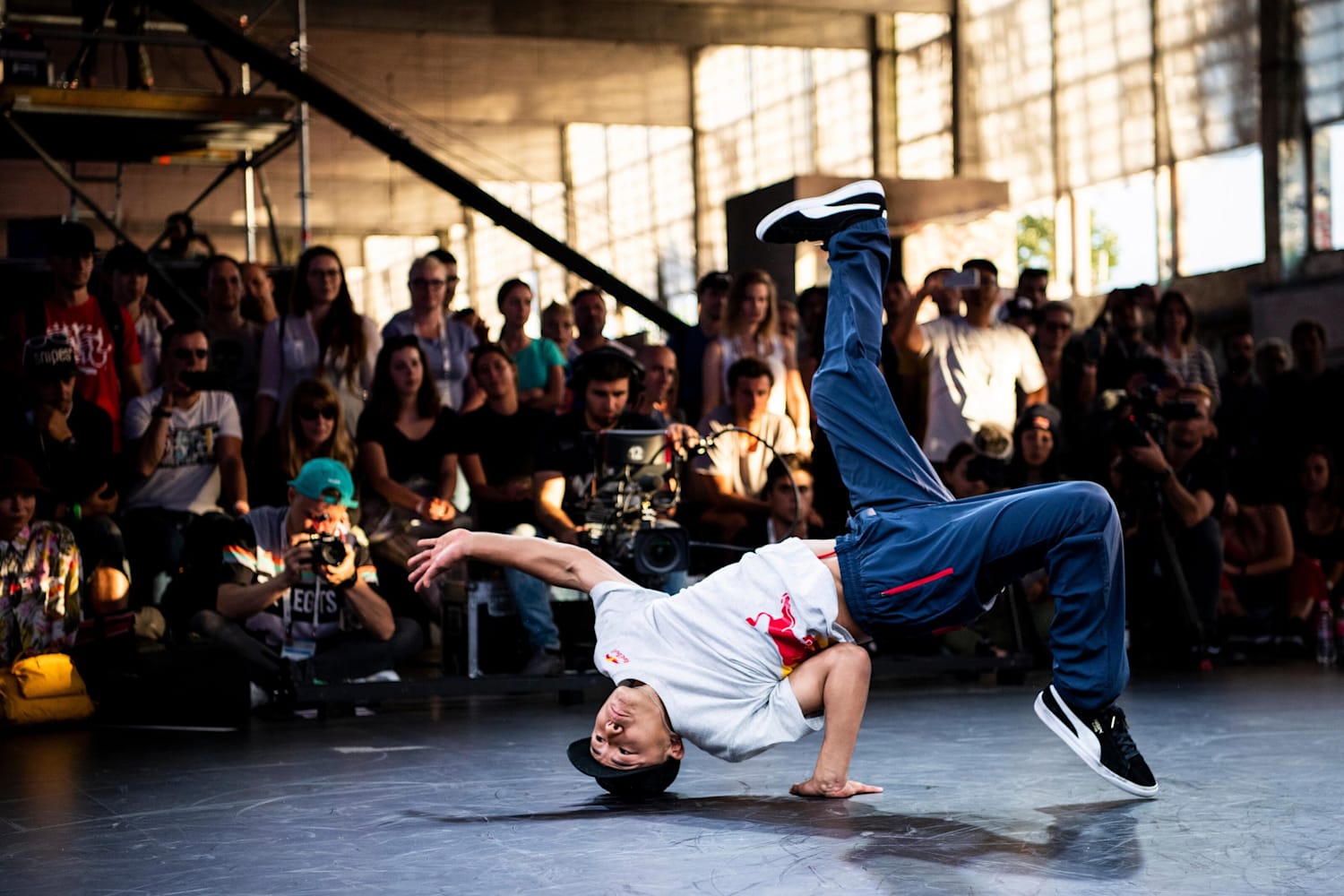History and Evolution of Breakdancing: Break Dancing
Breakdancing, a vibrant and dynamic street dance form, emerged from the streets of the South Bronx in New York City during the 1970s. Its roots lie in the rich cultural tapestry of the Bronx, where a fusion of African American and Latino street cultures, music, and social movements gave birth to this energetic and expressive dance style.
Origins and Influences
Breakdancing’s origins can be traced back to the early 1970s, during a period of social and cultural upheaval in the Bronx. The neighborhood was grappling with poverty, crime, and racial tensions, but amidst these challenges, a vibrant youth culture was flourishing. This culture was fueled by the infectious rhythms of funk, soul, and disco music, which provided a soundtrack for the burgeoning street dance scene.
One of the key influences on breakdancing was the emergence of “street gangs” and “crews,” which often engaged in competitive dance battles as a way to settle disputes or demonstrate their prowess. These battles often took place in parks, playgrounds, and community centers, and they provided a platform for dancers to showcase their skills and creativity.
Another crucial influence was the rise of “block parties,” which were large gatherings where people from different neighborhoods would come together to celebrate, dance, and socialize. These parties became fertile ground for the development of breakdancing, as dancers had the opportunity to experiment with new moves and styles, and to learn from each other.
Evolution of Breakdancing Styles
Breakdancing has evolved significantly since its inception, with new styles and techniques emerging over time. Some of the most prominent styles include:
- Popping: This style involves isolating and “popping” different parts of the body, creating a jerky and rhythmic effect. Popping is characterized by its precision, timing, and intricate footwork.
- Locking: Locking is characterized by sharp, angular movements and quick freezes, often accompanied by playful facial expressions and gestures. It involves a combination of popping, isolations, and rhythmic stops.
- Power Moves: These are more acrobatic and physically demanding moves, including spins, flips, and handstands. Power moves require strength, agility, and a high level of coordination.
Timeline of Breakdancing History
| Year | Milestone | Influential Figures |
|---|---|---|
| 1970s | Breakdancing emerges in the South Bronx, New York. | The Rock Steady Crew, The Furious Five, The Magnificent Force |
| 1980s | Breakdancing gains widespread popularity, fueled by the rise of hip-hop culture. | The New York City Breakers, The Soulsonic Force, The Floorlords |
| 1990s | Breakdancing evolves into a more competitive and stylized form, with the emergence of international competitions. | Crazy Legs, Ken Swift, B-Boy Ice |
| 2000s-Present | Breakdancing continues to evolve, with new styles and techniques emerging, and its popularity continues to grow worldwide. | Lilou, Poe One, Taisuke |
Elements and Techniques of Breakdancing

Breakdancing, also known as b-boying or b-girling, is a street dance style that originated in the 1970s in the Bronx borough of New York City. It involves a combination of acrobatic moves, rhythmic footwork, and intricate spins, creating a visually stunning and dynamic form of dance. The elements and techniques of breakdancing are multifaceted and demanding, requiring strength, agility, coordination, and creativity.
Toprock
Toprock is the foundation of breakdancing, the standing and walking-based moves performed at the beginning and end of a routine. It involves intricate footwork patterns, rhythmic steps, and stylized movements, often incorporating elements of other dance styles like salsa, jazz, and hip-hop.
Techniques
- Basic Footwork: Toprock starts with basic footwork patterns, like the grapevine, the box step, and the shuffle. These patterns are then combined and embellished with variations, creating a dynamic and rhythmic flow.
- Body Movements: Toprock incorporates body movements like arm swings, shoulder rolls, and head movements, adding to the visual appeal and rhythmic complexity of the dance.
- Styling: Toprock is not just about the steps but also about the style and attitude. B-boys and b-girls express themselves through their movements, adding personal touches and flair to their routines.
Downrock
Downrock is the core of breakdancing, where the dancers transition from standing to the ground, showcasing their footwork and rhythmic skills. Downrock is characterized by intricate footwork patterns, quick transitions, and complex movements, creating a mesmerizing display of speed and precision.
Techniques
- Footwork: Downrock involves a variety of footwork patterns, including the six-step, the turtle, the track, and the 1990. These patterns are performed in quick succession, creating a dynamic and visually appealing flow.
- Transitions: Downrock involves seamless transitions between different footwork patterns and movements, maintaining the flow and rhythm of the dance.
- Body Movements: Downrock incorporates body movements like arm swings, shoulder rolls, and head movements, adding to the visual appeal and rhythmic complexity of the dance.
Freezes
Freezes are static poses that showcase the dancer’s strength, balance, and flexibility. They are visually striking and serve as a transition between different elements of breakdancing, adding a sense of drama and artistry to the routine.
Techniques
- Balance: Freezes require exceptional balance and control, as the dancer must maintain a stable pose while holding it for a specific duration.
- Strength: Many freezes require significant strength to maintain the pose, particularly those involving arm balances or inversions.
- Flexibility: Freezes often involve contortion and flexibility, showcasing the dancer’s range of motion and control.
Power Moves
Power moves are the most dynamic and visually impressive elements of breakdancing. They involve acrobatic movements, spins, and flips, requiring exceptional strength, agility, and coordination.
Techniques
- Rotation: Power moves often involve rotations, such as windmills, flares, and headspins, where the dancer rotates their body around a specific axis.
- Flips and Jumps: Power moves also involve flips and jumps, like backflips, air flares, and 1990s, where the dancer performs aerial maneuvers with precision and control.
- Landing: The ability to land safely and gracefully after performing power moves is crucial, requiring proper technique and control.
Common Breakdancing Moves and Their Variations, Break dancing
- Toprock
- Grapevine
- Box Step
- Shuffle
- Running Man
- Charleston
- Downrock
- Six-Step
- Turtle
- Track
- 1990
- Suicide
- Baby Freeze
- Freezes
- Chair Freeze
- Handstand Freeze
- Headstand Freeze
- Backwards Freeze
- Spiderman Freeze
- Airchair Freeze
- Power Moves
- Windmill
- Flare
- Headspin
- Backflip
- Air Flare
- 1990
Visual Representation of Breakdancing Moves
| Move | Description | Image |
|---|---|---|
| Grapevine | A basic toprock step that involves crossing the feet in a side-to-side pattern. | [Insert image of a Grapevine move] |
| Six-Step | A downrock pattern that involves six steps in a circular motion. | [Insert image of a Six-Step move] |
| Chair Freeze | A freeze where the dancer balances on their hands, with their legs extended behind them. | [Insert image of a Chair Freeze] |
| Windmill | A power move where the dancer rotates their body around their vertical axis. | [Insert image of a Windmill move] |
Break dancing, with its intricate footwork and gravity-defying spins, is a dance form that demands both physical prowess and artistic expression. It’s a testament to the power of human movement, and it’s inspiring to see young talent emerging, like actor Colin Farrell’s son , who is making waves in Hollywood.
The energy and creativity of break dancing are sure to continue to captivate audiences, inspiring future generations of dancers to push the boundaries of this dynamic art form.
Breakdancing, like any art form, thrives on passion and dedication. It’s not just about the moves; it’s about the story you tell with your body. Just as a collector meticulously curates their collection of McDonald’s collector meal cups , a breakdancer builds their repertoire, adding new moves and techniques, shaping their unique style.
It’s this dedication that truly makes breakdancing a captivating spectacle.

